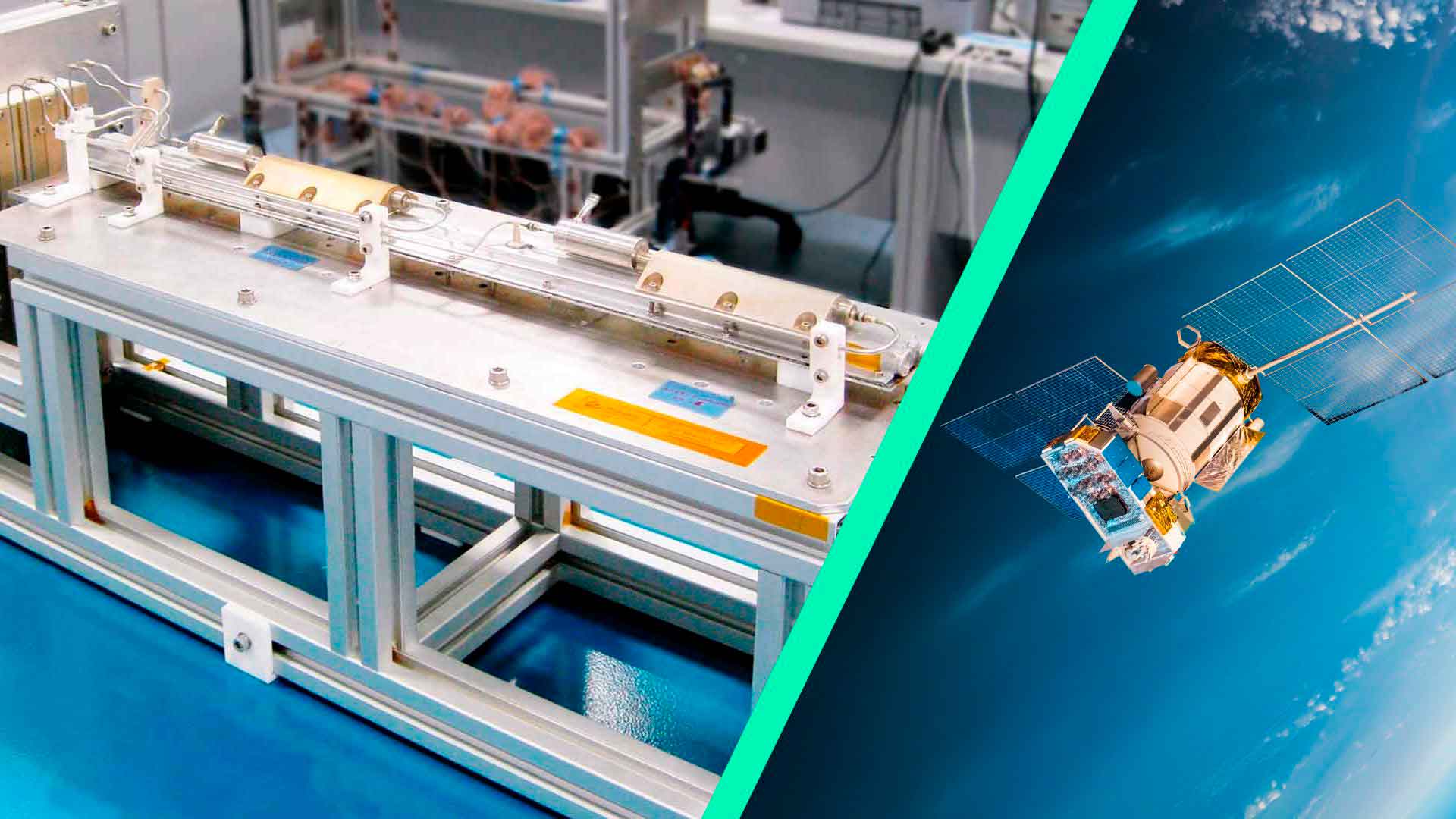- Sectors
- Aerospace & Defense
- Big science
- Fintech
- Insights

Space technology has advanced significantly in recent decades, and satellites play a crucial role in this evolution. The thermal control of the constituent elements and structures of satellites is vital to the proper operation of satellites in space. Heat management in space is a fundamental challenge, and one of the most effective technologies in this field is Loop Heat Pipes (LHPs).
In space, satellites are primarily exposed to extreme temperature and thermal radiation conditions. The environment in space is quite different from terrestrial conditions when it comes to heat dissipation. In space, heat can only be eliminated or received by thermal radiation, which is the least effective form of transferring heat compared to convection (natural or forced) or thermal conduction, which can be used on earth. This can cause electronic components to overheat or, conversely, to cool down too much, affecting their performance and useful life. Therefore, an efficient thermal control system is essential to maintain temperatures within the appropriate operating ranges.
These systems are used in all types of satellites, whether for telecommunications, observation, navigation, science or exploration.
Loop Heat Pipes are heat transfer devices that use evaporation and condensation of a working fluid to transport heat from a hot source to a heat sink with minimal temperature difference. Its unique design enables heat to be transported efficiently and without the need for additional energy, making optimal use of the thermodynamic properties of the fluid and the geometry of the device.
The most common temperature range for satellites is from -70 °C to approximately 90 °C. In that range, ammonia is the most efficient working fluid used in LHPs due to its excellent thermodynamic properties. For certain cryogenic applications, it is necessary to drop down to temperatures as low as -160 °C, where propylene and ethane replace ammonia as the most efficient working fluids. All these fluids have a high latent heat of vaporisation, high surface tension and high density of their vapour phase, with low viscosity, making them ideal candidates for thermal systems in satellites in these temperature ranges.
The LHPs designed and manufactured at ARQUIMEA cover a wide operating temperature range, from -160 °C to +120 °C, and can transport from 1 W to 1200 W, making them well suited for extreme space conditions.
The operating process of an LHP begins in the evaporator, where the heat generated by the satellite components causes the liquid to evaporate. This steam travels through a mission-specific steam pipe to the condenser, which is in contact with a radiator that emits and dissipates the heat into space. In the condenser, the working fluid is condensed back to liquid and returns to the evaporator through a liquid pipe. The evaporator is fitted with a capillary wick which is the element that provides the necessary pumping pressure to circulate the working fluid, overcoming the pressure losses in the different components of the LHP (evaporator, vapour line, liquid line and condenser line). This continuous cycle enables effective heat transfer, with a minimal temperature gradient between the heat source (heat sink component) and the cold sink (radiator), and with no moving parts.
The integration and testing of Loop Heat Pipes in satellites entails meticulous design and rigorous trials. LHPs must be carefully assembled and subjected to thermal trials and environmental tests to ensure that they survive the mechanical environment of the satellite launch and their operation in the extreme conditions of space, thus ensuring the reliability and efficiency of the thermal control system.
LHPs on satellites are used in a variety of space missions, from communications satellites to interplanetary probes. For example, they have been successfully implemented on NASA and ESA satellites, where their ability to handle high thermal loads and their reliability have been repeatedly demonstrated.
ARQUIMEA has 52 units already in orbit on various missions and 38 units awaiting launch. Among the most recent Loop Heat Pipes manufactured are those for the state-of-the-art SpainSat NG active satellite antenna, a genuine technological challenge.
In addition, we have worked on major projects with leading space agencies and satellite operators on different international missions, such as ExoMars, Intelsat 19, Intelsat 20, Star One C4, Astro-H, Sentinel-1/2, EDRS-A/C, Alphasat, etc.
In the future, advances in materials and manufacturing technologies, such as additive manufacturing, promise to make LHPs even more effective and accessible (cost-effective), broadening their use in a wider range of space applications.
Loop Heat Pipes represent an advanced and efficient solution for thermal management in satellites. Their ability to transfer heat efficiently, lightly and without the need for additional power means that they are a crucial component of modern space exploration. As we continue to advance in our understanding and use of space, LHPs will play an increasingly important role in ensuring the success and sustainability of our space missions.